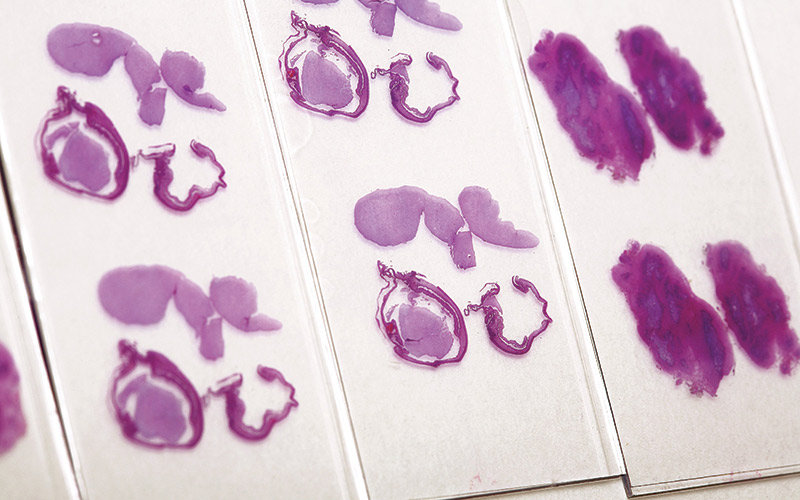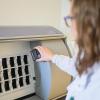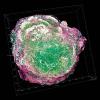Brian Nation analyses the figures and draws out the trends from a survey of biomedical scientists on histopathology reporting training.

The involvement of biomedical scientists in histological dissection has a chequered and erratic history over more than half a century. But acceptance that they have an important role to play alongside histopathologist colleagues has developed steadily over the past decade.
First, joint recognition by The Royal College of Pathologists (RCPath) and the IBMS that appropriately trained and qualified biomedical scientists could dissect a range of histological material, including breast, lower gastrointestinal and gynaecological specimens, led to the introduction of the Diploma of Expert Practice and relevant Advanced Specialist Diploma examinations, and to an increasing number of biomedical scientists operating at an advanced practitioner level in histological dissection. Subsequently, in 2010 – following discussions between the Department of Health, RCPath and the IBMS – the focus moved to histopathology reporting and the start of the Biomedical Scientist Histopathology Reporting Pilot Project, with participants in cellular pathology departments signing up in England, Scotland and Northern Ireland.
The initial focus was on gastrointestinal and gynaecological pathology, chosen as they represent areas of practice with a high volume of low-complexity, low-litigation reporting, and which frequently contribute to departmental reporting backlogs. From September the qualification will expand to offer a dermatopathology option.
Histopathology reporting training comprises four stages (A–D), with successful completion of stage D required for a biomedical scientist to commence autonomous reporting of either gastrointestinal or gynaecological specimens – because of the time commitment, candidates cannot train in both specialisms in parallel.
With an increasing number of practitioners completing stage C, and in one case stage D, it was felt to be an appropriate time to initiate a survey of the biomedical scientists undertaking, or having almost completed, the programme and also those who had withdrawn from the programme prior to completion. A total of 32 individuals on the programme responded.
Experience prior to commencement of training
In terms of prior experience, the questionnaire offered four possible role choices (Advanced Practitioner in Histological Dissection, Advanced Biomedical Scientist in Cytopathology, Histopathology Manager, Cytopathology Manager). Just under a third (31.3%) of respondents held either the IBMS/RCPath Diploma of Expert Practice in Histological Dissection or the IBMS Advanced Specialist Diploma in Cervical Cytology or in Non-Gynaecological Cytology. But 11 (34.4%) responders gave alternative role titles.
In total, 11 of the 32 gave a range of examples of practice when asked about previous histopathology reporting experience. This clearly illustrated an uncoordinated, ad hoc approach to any form of biomedical scientist involvement in histopathology reporting.
Allocation, management and supervision of training time
The questionnaire also sought to clarify the demands put upon biomedical scientist trainees, and to obtain their views on the structure of the programme and the support received. The allocation of protected time for training prompted a considerable response, with, for example, the need to defer stage B for a year, undertaking the necessary work after hours and at weekends, and allocation of 100% protected time demonstrating that there is neither a coordinated approach to, nor appropriate guidance in, implementing the programme.
Although the majority of responders (25 out of 32) thought the breadth of the training programme was “about right”, this subject provoked considerable comment, and perhaps reflects the lack of exposure to previous broad medical education and training. Supervision was reported to be good or above during stages A and B, but this reduced to just over 50% during stage C, and just over 40% in stage D. The perceived reduction of supervision during stages C and D may be a reflection of increasing confidence in a trainee’s ability and growing expertise; however, one responder reported no supervision during stage C. With regard to supervision provided by other clinical staff, lack of support was an increasing feature as training progressed through the stages, with 12.5% of respondents reporting “none” during stage A, up to 33.3% during stage D.
Towards an independent reporting role
On completion of stage C, 75% of respondents reported that they had commenced independent reporting. Seven (25%) said they were guaranteed a reporting role on completion of stage D, five (18%) had received no guarantee, while 16 (57%) were unsure of their position.
In terms of Agenda for Change pay band expectations, three anticipated Band 8c, and 15 were unsure. Twelve of the respondents made comment, with both Bands 8b and 8c being mentioned.
One said: “If I didn’t think my department would allow me to independently report once qualified, I would give up now.”
Brian Nation is an Editor and Author specialising in biomedical science.




